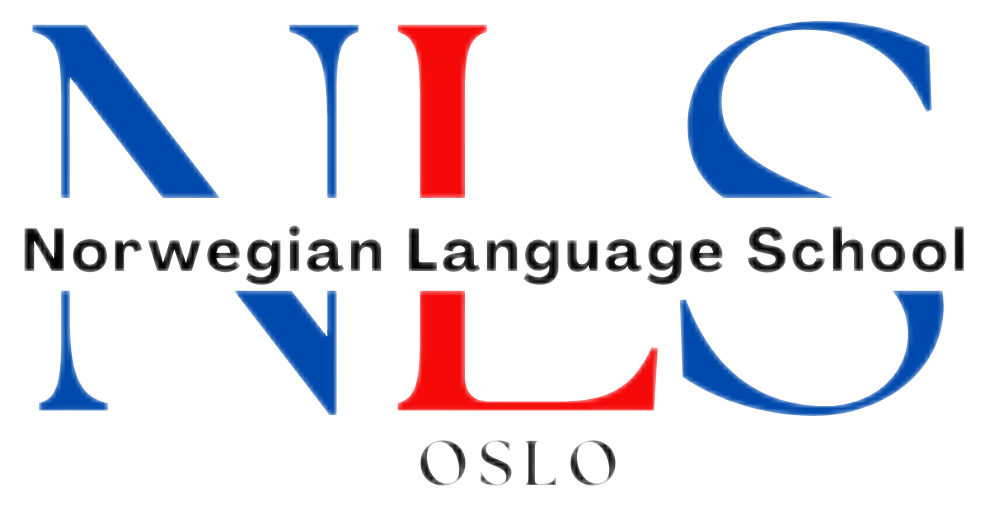

The Strategic Imperative: How Business Chinese Forges Deeper Sino-Norwegian Connections
In the global economic theater, the partnership between Norway and China stands as a testament to the power of cross-continental collaboration. Norway, with its advanced technology, rich natural resources, and powerful maritime heritage, finds a dynamic and expansive partner in China, the world’s second-largest economy and a powerhouse of manufacturing, investment, and consumer demand. While this relationship has historically thrived on mutual interests and the common language of international commerce—English—a new paradigm is emerging. To move beyond transactional exchanges and forge the deep, resilient, and highly profitable partnerships that will define the future, a more profound level of communication is required. This is the domain of business Chinese.
Acquiring proficiency in Mandarin for a business context is no longer a mere resume-booster or a niche skill for diplomats. It has become a strategic imperative for Norwegian professionals and companies seeking a decisive competitive edge. It is the key to unlocking a more nuanced understanding of the market, building authentic relationships grounded in cultural respect, and navigating the intricate subtleties of negotiation that often remain invisible to those who rely solely on translators. This article will explore the evolving Sino-Norwegian economic landscape, delve into the specific applications of business Chinese within Norway’s key industries, and outline a strategic approach for professionals to acquire this indispensable tool for long-term success.
Table of Contents
ToggleThe Evolving Sino-Norwegian Economic Landscape
The economic ties between Norway and China are both robust and increasingly diversified. For years, the trade balance has been significant, with billions of kroner in goods and services exchanged annually. China is one of Norway’s most important trading partners in Asia, a critical source of manufactured goods, and a vast, growing market for Norwegian exports. However, the nature of this relationship is maturing beyond simple import-export dynamics.
Initially focused on traditional goods, the partnership is now expanding into sophisticated sectors. Norwegian seafood, particularly salmon, has become a premium product coveted by China’s expanding middle class. The Norwegian maritime cluster, a global leader in shipping, offshore technology, and shipbuilding, engages in constant and complex collaboration with Chinese shipyards, suppliers, and financial institutions. Furthermore, a new frontier of cooperation is opening up in the realms of renewable energy, green technology, and digital innovation, where Norwegian expertise aligns with China’s ambitious goals for sustainable development.
In this multifaceted environment, relying on third-party interpreters or the English proficiency of Chinese counterparts introduces a layer of risk and missed opportunity. Nuances are lost, intentions can be misconstrued, and the crucial process of relationship-building—known as building guanxi—is hampered. The Chinese business ethos places immense value on trust, personal connection, and demonstrated long-term commitment. Speaking even a moderate amount of your partner’s language is perhaps the most powerful signal of respect and seriousness you can send. It shows that you are not merely interested in a quick deal, but in a lasting and mutually beneficial partnership. Therefore, for Norwegian companies operating in these key sectors, integrating business Chinese into their strategic skillset is the next logical step in deepening their engagement with this vital economic partner.
Sector Deep Dive: The Norwegian Seafood Industry
Nowhere is the case for business Chinese more compelling than in Norway’s world-renowned seafood industry. Norwegian salmon, in particular, has achieved an almost legendary status in China. It is synonymous with quality, purity, and health, making it a staple in high-end restaurants and increasingly, in domestic kitchens. China is one of the largest and fastest-growing markets for Norwegian seafood, representing a colossal opportunity. However, this market is also complex and highly competitive.
Mastering business Chinese provides a distinct advantage at every stage of the value chain. Consider the initial negotiations with distributors and importers. These discussions involve far more than price points. They delve into logistics, marketing support, and exclusivity agreements. Being able to discuss the nuances of 冷链物流 (lěng liàn wùliú – cold chain logistics) or to understand the specific requirements for 质量认证 (zhìliàng rènzhèng – quality certification) in Mandarin allows for clearer, more direct, and more efficient negotiations. It eliminates the “lost in translation” moments that can lead to costly misunderstandings about delivery schedules or product specifications.
Furthermore, understanding the consumer is paramount. A great deal of market intelligence and consumer sentiment is expressed online, on Chinese social media platforms like WeChat and Weibo, and in local media. A Norwegian executive who can understand discussions about 三文鱼 (sānwényú – salmon) can gain unfiltered insights into consumer trends, perceptions of their brand versus competitors, and emerging culinary uses for their product. This direct access to market sentiment is invaluable for tailoring marketing campaigns and product strategies effectively for the Chinese palate.
Finally, building guanxi with partners is the bedrock of long-term success. Sharing a meal, offering a toast, and engaging in social conversation are integral parts of the business process. Being able to do so in Mandarin elevates the interaction from a simple business meeting to a genuine gesture of partnership. It builds the personal trust that ensures your partner will go the extra mile for you when unforeseen challenges arise, be they logistical hurdles or regulatory changes. For seafood exporters aiming for sustainable growth in China, investing in linguistic and cultural fluency is not an expense; it is a critical investment in market resilience.
If you are a professional in this sector looking to gain this crucial advantage, the first step is structured, expert-led training. The NLS Norwegian Language School in Oslo offers tailored Business Chinese courses that focus on the practical language skills needed to succeed. Start your journey today by exploring their programs: https://nlsnorwegian.no/business-chinese/
Sector Deep Dive: The Maritime and Shipping Cluster
Norway’s identity is inextricably linked to the sea. Its maritime cluster is a global powerhouse, encompassing everything from ship ownership and management to advanced offshore technology, marine insurance, and naval architecture. This industry is, by its very nature, international, and China plays a monumental role as a partner and competitor. Chinese shipyards are among the world’s largest, and collaboration on new builds, retrofitting, and repairs is commonplace.
In this highly technical and capital-intensive field, precision in communication is not a luxury—it is essential for safety, efficiency, and financial viability. While technical specifications are often documented in English, the myriad of daily interactions involved in a major shipbuilding or offshore project are not. Project managers, engineers, and site supervisors from Norwegian companies who can communicate directly with their Chinese counterparts in Mandarin can resolve issues faster, prevent misunderstandings, and foster a more collaborative and efficient work environment.
Imagine a discussion about a vessel’s 推进系统 (tuījìn xìtǒng – propulsion system) or the schedule for sea trials, 海试 (hǎishì). The ability to clarify a technical query or confirm a timeline without waiting for an interpreter can be the difference between staying on schedule and facing costly delays. Contract negotiations in the maritime sector are famously complex. Understanding the cultural context behind negotiating tactics and being able to build personal rapport with the shipyard’s senior management can lead to more favorable terms and a smoother collaborative process.
Moreover, as the industry pivots towards sustainability and green shipping, the dialogue around new technologies is critical. Discussing innovations like 岸电 (àn diàn – shore power) or 压载水处理系统 (yā zài shuǐ chǔlǐ xìtǒng – ballast water treatment systems) in Mandarin allows for a deeper and more substantive exchange of ideas with Chinese partners who are also investing heavily in this area. It positions Norwegian companies not just as clients, but as knowledgeable and engaged technological partners, opening doors for joint ventures and research and development initiatives.
From Proficiency to Partnership: A Strategic Approach to Learning
Understanding the compelling “why” behind learning business Chinese naturally leads to the “how.” The goal for a busy professional is not necessarily academic perfection, but functional, confident proficiency in a business context. A strategic approach to learning is therefore essential. This means moving beyond generic language apps and seeking a curriculum specifically designed for business applications.
An effective business Chinese program should focus on several key pillars. First is practical vocabulary relevant to your industry, as demonstrated in the seafood and maritime examples. Second is a deep dive into business etiquette and cultural norms, ensuring you know how to conduct a meeting, exchange business cards correctly, and navigate a business banquet with grace. Third is a focus on listening and conversational skills, as the primary goal is to build relationships and communicate effectively in real-time scenarios. Finally, it involves scenario-based learning, where you practice common business situations like negotiations, presentations, and networking.
This is precisely the methodology employed by specialized language institutions. They understand that an executive’s time is valuable and that the learning process must be efficient, relevant, and goal-oriented. They provide a structured path from foundational knowledge, like mastering the Pinyin phonetic system and basic tones, to high-level-discussions.
For professionals in the Oslo area, the NLS Norwegian Language School provides such a strategic pathway. Their courses are designed with the business professional in mind, blending linguistic instruction with the cultural and commercial context needed for real-world application. To take your Sino-Norwegian business relationships to the next level, a dedicated learning program is the most effective investment you can make. You can find detailed information and register for their Business Chinese courses here: https://nlsnorwegian.no/business-chinese/
Overcoming the Learning Curve: Practical Strategies for Professionals
The prospect of learning Mandarin can seem daunting. The characters appear complex, and the tones can be challenging for speakers of non-tonal languages. However, with the right strategies and mindset, achieving a professional working proficiency is an entirely attainable goal.
First, demystify the characters. While there are thousands of characters, you don’t need to know them all to be effective. A few hundred key characters form the basis of most business communication. Modern learning tools and a focus on typing with Pinyin—the standardized system for romanizing Mandarin—allow you to communicate professionally in writing long before you have mastered handwriting every character.
Second, prioritize listening and speaking. In business, your immediate goal is to connect and communicate. Focus your energy on mastering the tones and pronunciation for key phrases. Practice with native speakers, listen to Chinese business podcasts or news, and don’t be afraid to make mistakes. Your effort will be recognized and deeply appreciated.
Third, embrace technology. Spaced repetition systems (SRS) like Anki or Pleco’s flashcard feature are incredibly powerful for memorizing vocabulary and characters. Use apps to practice your tones. Consume media relevant to your field in Chinese. This immersion will accelerate your learning and keep the content relevant and engaging.
Finally, be consistent. Learning a language is a marathon, not a sprint. Dedicating a consistent amount of time each week—even if it’s just a few hours—is far more effective than sporadic, intensive cramming sessions. A structured course provides the accountability and expert guidance needed to maintain this consistency and navigate the learning process efficiently.
The journey of a thousand miles begins with a single step. The journey to Mandarin proficiency is no different. It requires commitment, but the strategic advantages it unlocks are immeasurable, offering a direct return on your investment of time and effort.
In conclusion, the economic relationship between Norway and China has matured to a point where superficial communication is no longer sufficient. To build the robust, trust-based partnerships required to fully capitalize on the immense opportunities in sectors from seafood to green technology, a deeper level of engagement is necessary. Business Chinese is the master key that unlocks this level. It is the language of relationship, of nuance, of respect, and of long-term strategic advantage.
For the forward-thinking Norwegian professional, it is an investment in their personal career trajectory and in their company’s future success in one of the world’s most critical markets. It is a challenging but profoundly rewarding endeavor that transforms you from a foreign visitor into a valued partner.
Take the definitive step towards mastering the language of opportunity. Enroll in a Business Chinese course at the NLS Norwegian Language School and begin building the bridges that will define your success in the decades to come. Visit their website to learn more and secure your place: https://nlsnorwegian.no/business-chinese/
If you want to learn Norwegian, you can register for classes here. We look forward to hearing from you and helping you become fluent in Norwegian.





